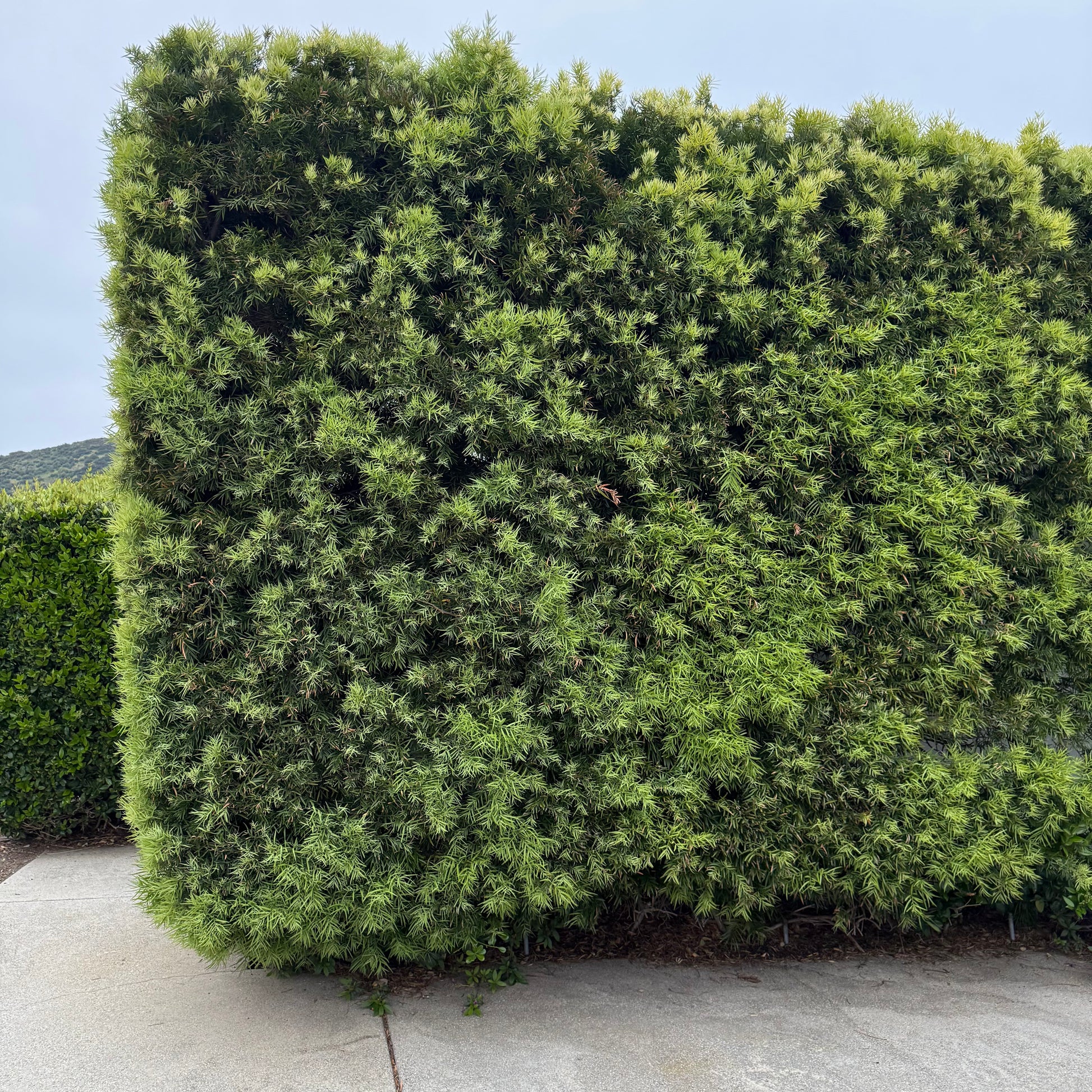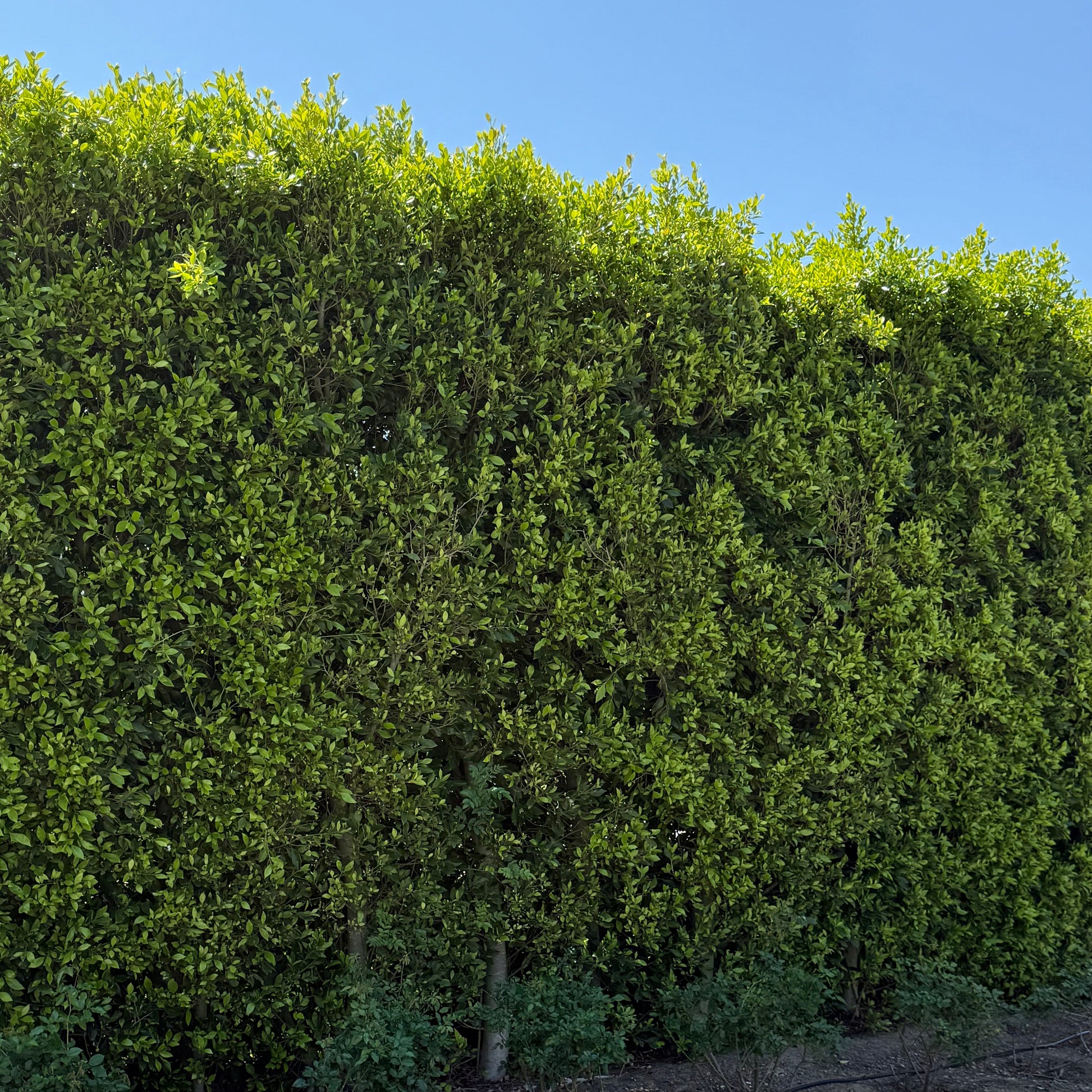Podocarpus gracilior, commonly known as Fern Pine, is a versatile, hardy tree cherished by gardeners and landscapers alike. Native to eastern Africa, this elegant evergreen is a popular choice for hedges, windbreaks, and privacy screens. Its graceful foliage, easy maintenance, and environmental benefits make it a favorite among homeowners and professionals looking to enhance outdoor spaces. In this guide, we’ll explore everything you need to know about growing, caring for, and benefiting from Podocarpus gracilior, along with frequently asked questions to help you achieve the best results.
.
What Is Podocarpus Gracilior?
Podocarpus gracilior, or Fern Pine, is a slender, evergreen tree or shrub that thrives in both mild and warm climates. Known for its feathery, fern-like foliage and upright growth habit, it’s an ideal choice for hedges and windbreaks, as well as a standalone ornamental tree. While "Fern Pine" is its common name, it’s neither a fern nor a true pine. Instead, it belongs to the Podocarpaceae family, which includes other coniferous evergreen trees and shrubs. The Fern Pine is tolerant of various environmental conditions and can be shaped and pruned to fit many landscaping styles.

Benefits of Growing Podocarpus Gracilior
1. Ideal for Privacy Hedges and Windbreaks
Podocarpus gracilior is excellent for privacy hedges, creating a dense screen that can help block views from neighbors, streets, or nearby buildings. Additionally, its upright, thick foliage is effective in blocking wind, which can make it a great choice for windbreaks in exposed areas. Unlike some fast-growing hedging plants, Fern Pine remains relatively narrow, meaning it won't encroach too far into your space while providing a lush green barrier.
2. Minimal Maintenance
One of the main reasons gardeners favor Podocarpus gracilior is its low maintenance requirements. It grows at a moderate rate, so it doesn’t require frequent pruning to maintain its shape. Fern Pines are resilient, drought-tolerant, and can thrive with basic care.
3. Aesthetic Appeal
With its soft, feathery leaves, Podocarpus gracilior brings a subtle elegance to any garden. Whether pruned as a formal hedge or left to grow naturally as a tree, it offers a refined and lush aesthetic. This tree’s foliage is a deep green, which adds year-round color and texture to the landscape.
4. Adaptable to Various Climates
Podocarpus gracilior is hardy in USDA zones 9 through 11, making it suitable for regions with mild winters and warm summers. It can handle temperatures down to about 20°F, making it adaptable to various climates within these zones. Furthermore, Fern Pines are tolerant of coastal conditions, including some salt spray, which is beneficial for those living near the ocean.
5. Environmentally Friendly
Planting Podocarpus gracilior contributes to environmental sustainability by providing a habitat for local wildlife. The dense foliage offers shelter for birds, and its presence contributes to air purification by absorbing CO₂ and releasing oxygen..

Planting and Care Guide
1. Selecting the Right Location
- Light Requirements: Podocarpus gracilior prefers full sun to partial shade. While it can tolerate light shade, it grows best and maintains a denser, healthier appearance with at least six hours of sunlight per day.
- Soil Type: Fern Pines are quite adaptable and can grow in various soil types, from sandy to loamy soils. However, they thrive best in well-draining, slightly acidic to neutral soils.
- Spacing: For a hedge, space the plants about 2 to 4 feet apart, depending on the desired density. If you’re planting it as a standalone tree, ensure ample space for growth, as it can reach up to 60 feet in height if left unpruned.
2. Planting Podocarpus Gracilior
- When to Plant: The best time to plant Fern Pine is during the early spring or fall, giving it time to establish roots before extreme temperatures.
-
Planting Process:
- Dig a hole twice as wide as the root ball and about the same depth.
- Position the plant in the hole, ensuring the top of the root ball is level with or slightly above the surrounding soil.
- Backfill the hole with soil and gently press it down to eliminate air pockets.
- Water thoroughly to help settle the roots.

3. Watering Needs
- Establishment Phase: When first planted, Fern Pine needs regular watering to help it establish. Aim to keep the soil moist but not soggy, watering about once or twice a week.
- Mature Plants: Once established, Podocarpus gracilior is drought-tolerant and only needs occasional watering. In areas with frequent rainfall, additional watering may not be necessary.
4. Pruning and Shaping
- Hedge Maintenance: To maintain a dense hedge, prune your Podocarpus in late winter or early spring. It tolerates pruning well and can be shaped as desired.
- Tree Form: If you prefer a tree form, focus on removing lower branches as the tree grows, creating a single central trunk.
. .
 FAQs about Podocarpus Gracilior
FAQs about Podocarpus Gracilior
1. How fast does Podocarpus gracilior grow?
Fern Pine has a moderate growth rate, averaging about 12 to 24 inches per year, depending on the conditions. While it is not as fast-growing as some other hedge plants, this manageable rate makes it easier to maintain a desired shape.
2. Does Podocarpus gracilior need to be pruned often?
Podocarpus gracilior doesn’t require frequent pruning. If grown as a hedge, an annual trim in late winter or early spring will help maintain its shape. If grown as a tree, pruning is optional but can help create a more refined appearance.


















